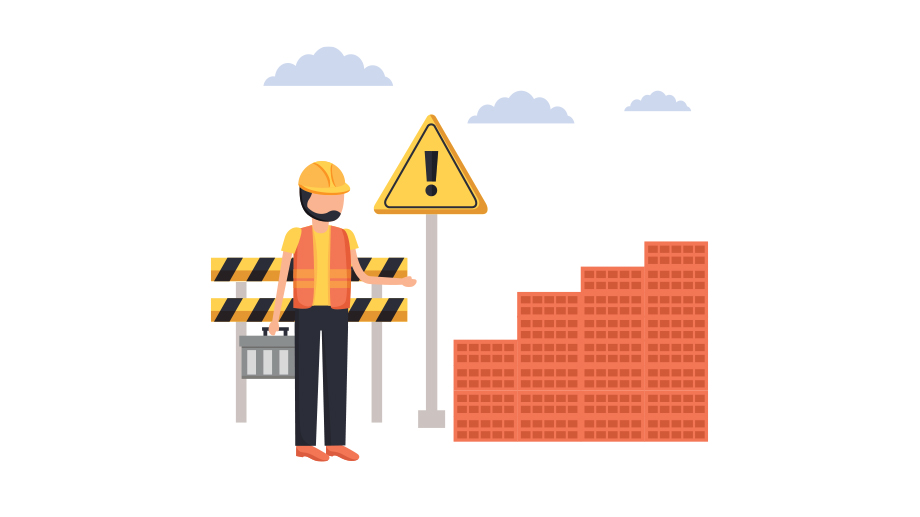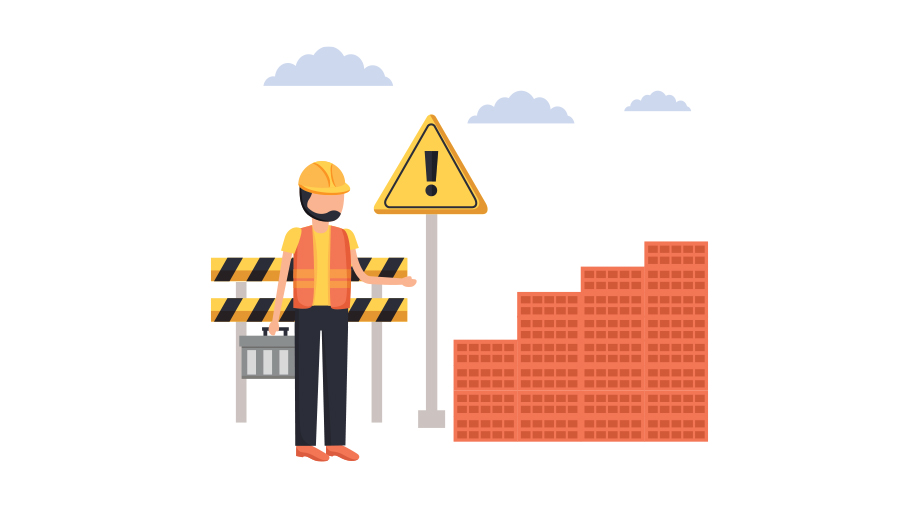
In the peak of the hot summer season, the Occupational Safety and Health Organization (OSHA) is reminding affected businesses and their employees of their continuing campaign to combat heat illness for outdoor workers safety. In educating employers on the guidelines in place, employees experience a lesser chance of suffering from harsh outdoor work environments.
The following tips exemplify how both keeping your employees safe and avoiding OSHA violations can be facilitated using only powerful mobile workforce management apps on your mobile devices.
Tips To Ensure Outdoor Workers Safety
Here are some actionable strategies to ensure employee safety and uphold OSHA safety regulations entirely through your mobile devices:
Stay Informed: Inform Workers of the Heat Index
Keeping outdoor workers updated about temperature changes is paramount. Manual updates can be time-consuming, but mobile apps offer effective alternatives. Managers can employ in-app messaging systems to provide real-time temperature updates, enabling workers to take appropriate preventive measures.
Automated alerts can be set to trigger warnings when the temperature crosses critical thresholds, ensuring compliance with regulations, such as California’s requirement to notify employees when temperatures exceed 95 degrees.
Hydration Reminder: Provide Water and Reminders
Hydration is a cornerstone of heat safety. OSHA mandates that employers provide clean and accessible water to their outdoor employees. Alongside this responsibility, managers must remind workers to stay hydrated throughout their shifts.
Instead of burdening managers with individual reminders, mobile apps can automate alerts to remind workers to drink water based on the heat index. For instance, when the heat index enters the high-risk range (103 to 115 degrees), workers can receive notifications prompting them to consume four cups of water per hour.
Swift Response: Provide Access to Timely Medical Service
In cases of heat-related emergencies, quick access to medical care is essential. Mobile apps equipped with in-app messaging and real-time location services empower managers to receive immediate notifications about incidents, facilitating prompt medical attention. Pinpointing the precise location of affected workers aids first responders in delivering timely assistance for heat-related injuries.
Strategic Rest Breaks: Account for Changes in Temperature
OSHA underscores the significance of rest periods for outdoor workers, with some states, like California, mandating rest breaks at specific temperatures. Leveraging mobile apps, employers can proactively adjust rest schedules in response to temperature fluctuations. Automated alerts can notify workers of required breaks based on weather changes, ensuring compliance with regulations and safeguarding workers’ health.
Customized Protocols: Establish Heat Protocol and Encourage Precautions
Educating employees about heat illness protocols tailored to their specific work environment is crucial. Mobile apps can facilitate this by delivering automated temperature updates directly to workers’ devices. Empowered with the knowledge of current conditions, employees can follow established protocols without constant reminders from managers, fostering a proactive safety culture.
Seamless Supervision: Supervise Workers through Constant Communication
OSHA recommends frequent check-ins with heat-exposed workers, a task streamlined by mobile apps. These apps enable continuous communication through messaging, file sharing, and more. By centralizing communication on a single platform, supervisors can efficiently monitor and guide workers, ensuring adherence to safety practices despite erratic changes in the heat index.
Training and Education: Deliver Heat Safety Training via Apps
Mobile apps can serve as platforms for delivering comprehensive heat safety training to workers. Through interactive modules, videos, and quizzes, employees can enhance their understanding of heat-related risks and prevention strategies. These apps can track training completion and ensure that all workers are well-informed, contributing to a safer work environment.
Real-time Heat Index Monitoring: Integrate OSHA Heat Index App
Integrating the OSHA Heat Index app into your mobile workforce management app can provide real-time heat index readings. This integration empowers workers to stay updated on the heat index at their location, enabling them to take proactive measures accordingly. Managers can also receive alerts when the heat index crosses hazardous thresholds, prompting immediate action.
allGeo Lone Worker Safety App: Enhancing OSHA Heat Safety Compliance For Outdoor Workers Safety
The allGeo Lone Worker Safety App is a powerful tool that can greatly aid businesses in complying with the OSHA Heat Safety Checklist for outdoor workers. This app offers a range of features designed to address the specific challenges posed by heat-related risks.
Here’s how the a Lone Worker Safety App can help ensure OSHA compliance for field workers with respect to heat safety checklist:
Real-time Monitoring and Alerts: Lone worker safety solutions often include real-time monitoring of workers’ conditions and activities. For heat safety compliance, the solution might include temperature sensors that track environmental conditions. If the temperature reaches dangerous levels, the system could automatically send alerts to both the worker and a supervisor, enabling quick action to mitigate the risk.
Location Tracking: allGeo solutions often incorporate GPS tracking. This feature can help supervisors know the exact location of each worker in real time. In the context of heat safety, this tracking can be used to ensure that workers do not get stranded or lost in remote areas where the risk of heat-related illnesses is higher.
Check-in and Safety Procedures: These solutions usually require workers to periodically check in to confirm their safety. This feature can be adapted to incorporate OSHA’s heat safety guidelines. For instance, the system might prompt workers to take mandatory breaks, hydrate, and rest in shaded areas during specific intervals to prevent heat-related issues.
Customized Safety Plans: A lone worker safety solution can be configured to align with your organization’s heat safety plan, including guidelines on the appropriate clothing, PPE, hydration, and work-rest schedules. The system could then provide reminders to workers to adhere to these guidelines.
Emergency Response: In case a worker does experience heat-related distress, a lone worker safety solution could facilitate swift emergency response. This might include sending distress signals, alerting supervisors, and providing accurate location information so that help can reach the worker promptly.
Data and Reporting: Compliance often involves documentation. A lone worker safety app could generate reports on workers’ activities, breaks taken, and environmental conditions. These reports could be used to demonstrate compliance with OSHA’s heat safety checklist during inspections or audits.
It’s important to note that while lone worker safety solutions can provide valuable tools to enhance worker safety, they are just one aspect of an overall safety strategy. Organizations should still implement comprehensive heat safety training, risk assessment, and contingency plans to effectively manage the risks associated with outdoor workers safety.
Conclusion
In the battle against heat-related illnesses, mobile workforce management apps emerge as indispensable tools for employers striving to ensure outdoor workers safety. By harnessing these apps, businesses can effortlessly inform, protect, and empower their workers, aligning with OSHA standards while fostering a culture of vigilance and care. As temperatures rise, let technology be the shield that guards outdoor workers against heat-related risks.
allGeo is a cloud-hosted, carrier-grade location and messaging platform that helps SMB and Enterprise businesses better manage their mobile employees by improving productivity and accountability, while reducing payroll and operations costs with solutions such as GPS tracking & time clock, Lone worker safety, Automation of field activity monitoring, Mobile forms & data collection including signature, notes, pictures, barcode/QR code, etc. The allGeo platform enables these solutions across a wide range of industries such as field service management, trade services, emergency responders, sales reps, transportation & logistics, and home health care providers.
If you have any questions or need additional information, let us know at sales@abaq.usor or call us at +1 415-496-9436
